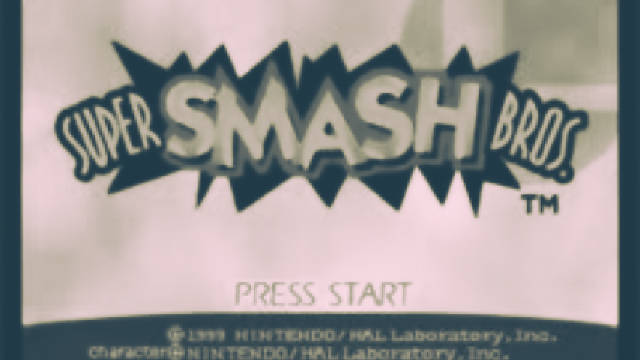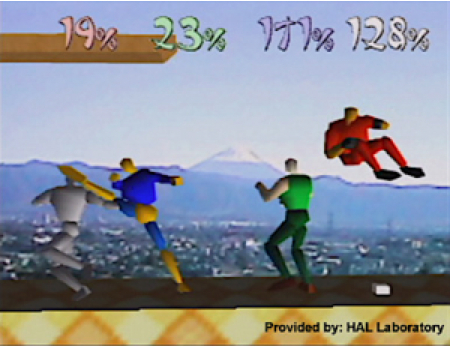 2011 was a year of momentous anniversaries for the gaming world. Many developers, publishers, and fans have had cause to celebrate, but none more so than Nintendo. Tomb Raider’s heroine turned 15, but so did the Pokémon series (read: the second best-selling game franchise of all time). Lemmings and Sid Meier’s Civilization turned 20, but so did Super Mario World and its game-changing console, the SNES. And the dawn of both the Zelda and Metroid franchises came to us a respectable 25 years ago, before many of its greatest fans were even born.
2011 was a year of momentous anniversaries for the gaming world. Many developers, publishers, and fans have had cause to celebrate, but none more so than Nintendo. Tomb Raider’s heroine turned 15, but so did the Pokémon series (read: the second best-selling game franchise of all time). Lemmings and Sid Meier’s Civilization turned 20, but so did Super Mario World and its game-changing console, the SNES. And the dawn of both the Zelda and Metroid franchises came to us a respectable 25 years ago, before many of its greatest fans were even born.
On the more recent side of things, the big N released ten years ago one of the fastest, wildest, most fun (and somehow deepest) games of its stable. I refer, of course, to Super Smash Bros. Melee. It may seem like a quiet anniversary, but upon release, Melee was anything but. It was the first GameCube game to reach 1 million sales– despite the console’s ill fortune overall – and today stands as the best-selling game of that purple console, with over 7 million snatched from shelves worldwide. It wasn’t Mario, Pikachu, Link, Fox, or Samus alone who claimed that crown, but a game that put them all in a blender anyone could make spin-– from your eight-year-old neighbor to the local circle of elite smashers. Melee isn’t alone, of course. Super Smash Bros. Brawl was released to the Wii-owning masses in 2008, after twin delays on the developer’s part (painful days, I tell you).
More importantly, opus no. 4 is on the way. It was announced– with words alone, and to much applause-– at this year’s E3, alongside the Wii U itself. Fans were left wondering where it will fit within the series, as well as how it will take advantage of Nintendo’s next console, for which we now know that nothing (regarding the machine’s design) is final.
A few months ago, a rather official-looking leak created another flurry among fans of the series. It featured both a Japanese and English logo for Super Smash Bros. Universe, the U of Universe taking on the white-on-blue horseshoe emblem of the Wii U itself. What’s more, the document’s contents mentioned omitting the tripping mechanic this time around (perish the thought), as well as more third-party support.
Beyond that, fuel for speculation runs dry. The game, in all logic, is quite a way down the pipeline-– one that Mario is nowhere near. Project Sora intends to finish Kid Icarus: Uprising (slated for a 2012 release) before breaking any ground. In the meantime, perhaps we can anticipate what the fourth installment will hold by stepping into the history of the series as a whole, and into the brain of its creator, the aforementioned Sakurai.

Look familiar? No? Fine, you’re excused. But surely you recognize its ancestry to the Super Smash Bros. series. Something about the nose. Anyway, around this time it was called Dragon King: The Fighting Game. It was dreamt up by a young Sakurai– then working at HAL Laboratory, Inc., a subsidiary of Nintendo– looking to make “an alternative to the two-dimensional fighting games that were crowding out the market.” When he shared the idea with his superior, Satoru Iwata, the man was immediately on board, programming the game on weekends while Sakurai led the creative charge.
And this, as you can see, was before the game came to be steeped in Nintendo’s own universe. The roster, the storylines, the mythology would be created from scratch. In a Brawl-era edition of “Iwata Asks,” Sakurai explains the eventual and deliberate pitch to field Nintendo’s home-bred characters.
I asked to use Nintendo characters since it was so hard to accurately convey to the players the atmosphere of the gaming world where they play a fighting game on home console. You have to have some main characters in a fighting game, and when you line up character 1, character 2, character 3 and so on, the main characters end up blurring together. With a game for the arcade, it’s okay for character development to take a backseat since players are content with the fighting. With a fighting game for the home console, however, you have to set up the general image or the atmosphere of the gaming world right from the start or else the game suffers. That’s why I asked to use Nintendo characters.
Whatever’s clever, Sakurai-san. If it allows me to bend inter-IP space-time, knocking out Donkey Kong with the Master Sword, I’m in. Some fans were perplexed by the idea, and Sakurai does pragmatically address the oddity of having universes collide: “the feel of the characters are different and, more importantly, it felt wrong to put characters with different head to body ratios side-by-side.” But any qualms are certainly part of the past now. No one can rightfully raise quibbles before a franchise with such past success and present momentum.
Pages: 1 2




 ShareThis
ShareThis







Wow! I didn’t know Smash Bros was gonna be a different fighting game! Thanks for the info.